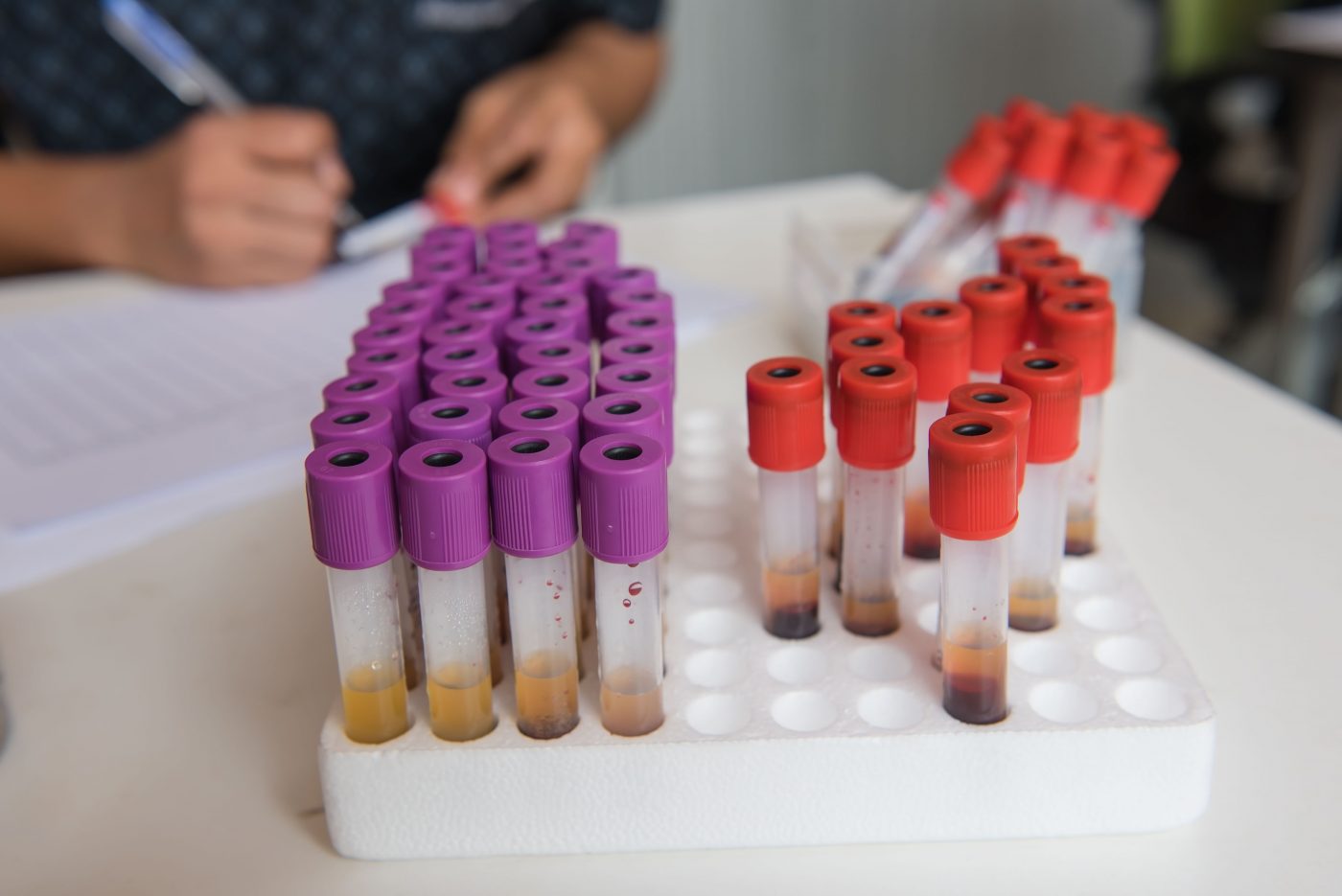Blood Levels of Protein Common to Lungs May Mark Progression in SSc-ILD
Written by |

oatautta/Shutterstock
A glycoprotein called Krebs von den Lungen‐6 (KL-6), known to indicate lung inflammation, shows promise as a biomarker of lung tissue damage and likely disease progression in people with scleroderma associated with interstitial lung disease (SSc-ILD), a study reports.
The study, “Serum markers of pulmonary epithelial damage in systemic sclerosis‐associated interstitial lung disease and disease progression,” was published in the journal Respirology and led by scientists in the U.K.
Although many patients with SSc-ILD have relatively mild or stable forms of lung disease, those with rapidly progressive forms are at risk of an earlier death.
Prognostic markers that can accurately identify patients most likely to develop progressive SSc-ILD is important in ensuring these people receive the best treatment possible, as early as possible.
“Serum [blood] biomarkers are easily obtainable, and could provide increased prognostic ability and potentially new insights into pathogenesis [disease mechanisms] and potential therapeutic targets in SSc‐ILD,” the researchers wrote.
KL-6 and the cytokeratin 19 protein fragment called CYFRA 21‐1 are two molecules that may be prognostic biomarkers in SSc-ILD, meaning they might predict the disease’s likely outcome, since both are markers of lung tissue injury and abnormal repair.
KL-6 is a glycoprotein, or a protein containing a sugar molecule, and it is mostly found in cells lining the walls of the alveoli — the small sacs that are responsible for gas exchange (breathing) in the lungs. KL6 blood levels are abnormally high in patients with SSc-ILD, particularly those with more extensive and severe disease.
CYFRA 21‐1 is also found in cells lining the lung’s airways, and is released into the bloodstream in response to injuries. A previous study demonstrated that CYFRA 21‐1 can be used to distinguish healthy people from those with idiopathic pulmonary fibrosis, another form of ILD.
To explore the potential of KL-6 and CYFRA 21‐1 as prognostic markers of SSc-ILD, the investigators measured the levels of both molecules in the blood of two groups of patients.
The first involved a retrospective review of data covering 189 SSc patients followed at the Royal Brompton and Royal Free Hospitals in London between 1991 and 2013. The second group involved 118 SSc patients, and a prospective review of their data gathered as they were being treated at the same hospitals between 2014 and 2016.
Lung function data, including information on forced vital capacity (FVC) and diffusing capacity for carbon monoxide (DLCO), were collected when blood samples were drawn to measure KL-6 and CYFRA 21‐1 levels. (FVC measures the total amount of air a person is able to exhale after taking a deep breath, while DLCO measures how much oxygen is transferred from the lungs into the bloodstream.)
The presence of ILD was determined based on lung tissue changes that were visible on chest imaging scans. Patients were also classified as having “limited” or “extensive” ILD based on their pattern of lung tissue scarring (fibrosis).
Genetic tests were performed to identify patients carrying a genetic variant (rs4072037) in the gene encoding KL-6, known as MUC-1, which has been associated with higher blood levels of the protein.
Statistical analyses were then used to identify possible relationships over time between KL-6 or CYFRA 21‐1 levels and changes in lung function measures.
Across both groups, KL‐6 and CYFRA 21‐1 levels were found to be higher in patients with confirmed SSc-ILD, and in those who had “extensive” rather than “limited” lung fibrosis.
As expected, patients carrying the rs4072037 genetic variant also had higher KL-6 blood levels. This was also true across both patient groups.
Among those with confirmed SSc-ILD, the levels of KL-6 in the bloodstream also associated with lung function decline — lower DLCO values in both patient groups, and lower FVC values in the retrospective group. Such correlations were not found for CYFRA 21‐1.
Combining these patient groups, the researchers found that KL-6 levels continued to be predictive of a decline in DLCO for both milder and more severe forms of ILD. This decline was also seen in subsequent statistical analyses that adjusted for patients’ age, sex, ethnicity, smoking history, and genetic background.
“From our study, we conclude that serum KL‐6 appears to be a better marker of progressive SSc‐ILD than CYFRA 21‐1,” and one with likely “clinical utility in risk stratification for progressive SSc‐ILD,” the scientists wrote.





